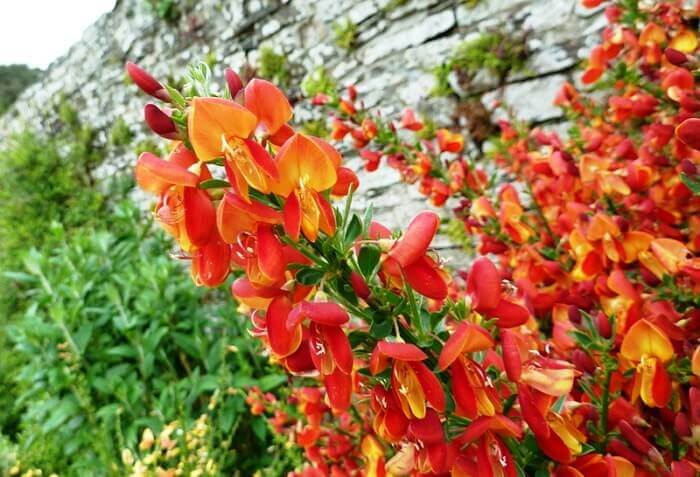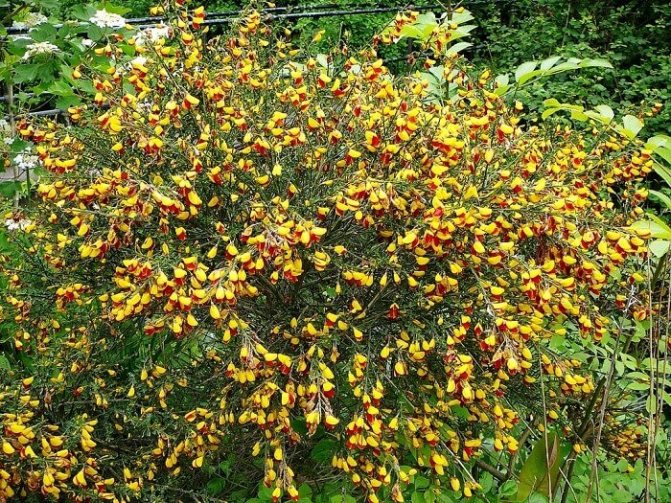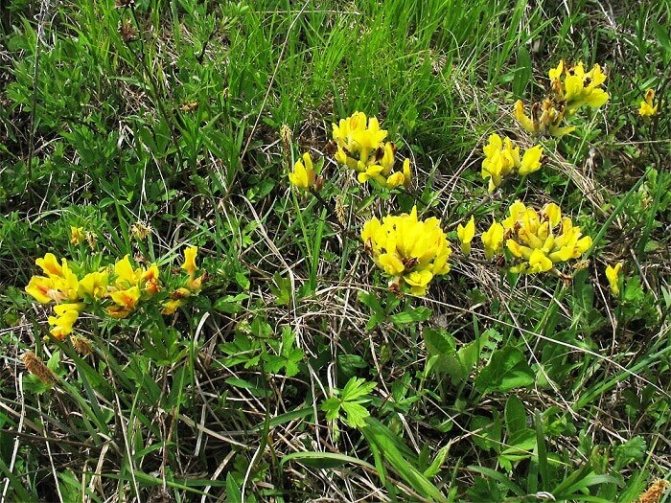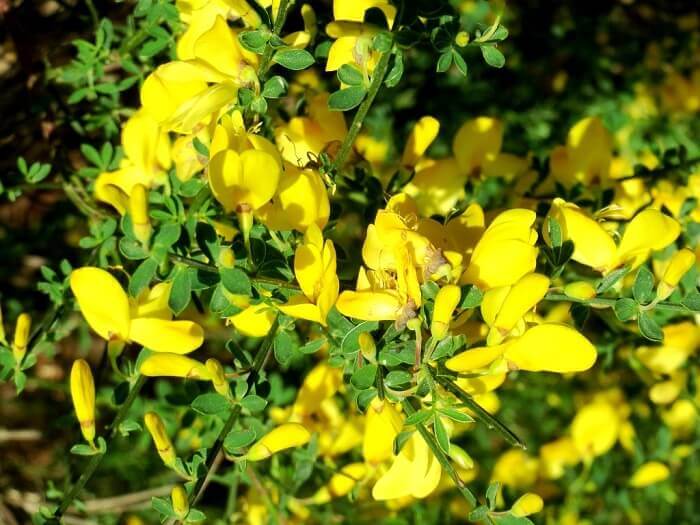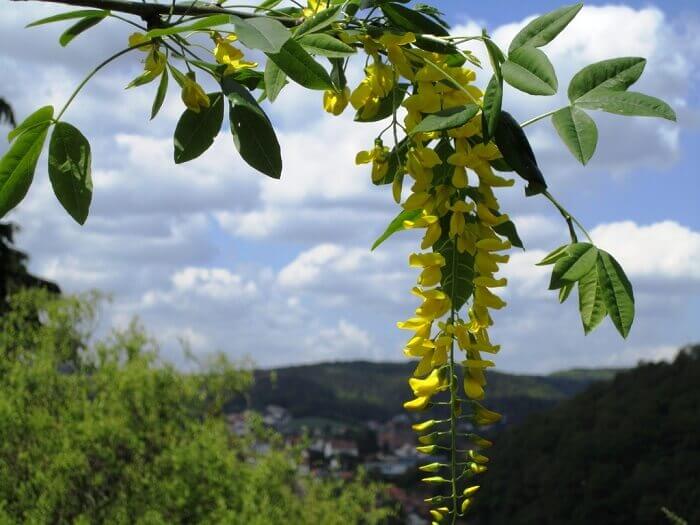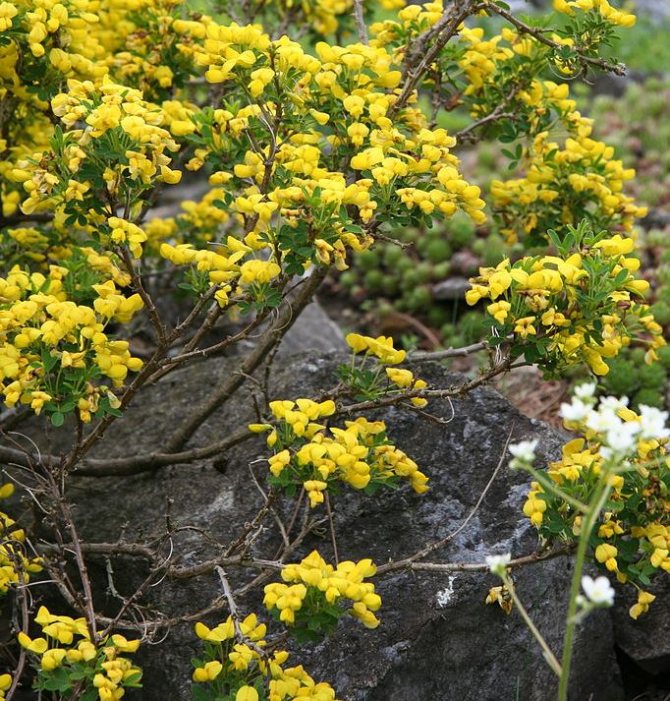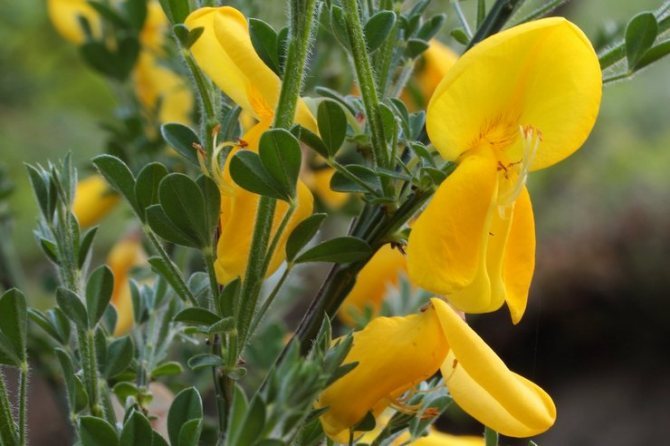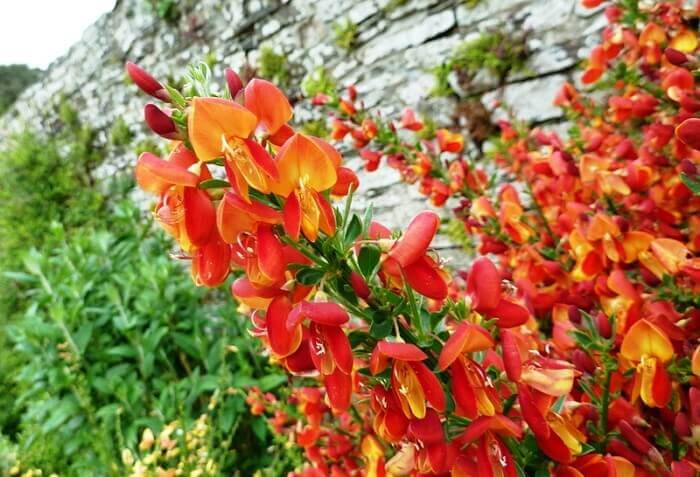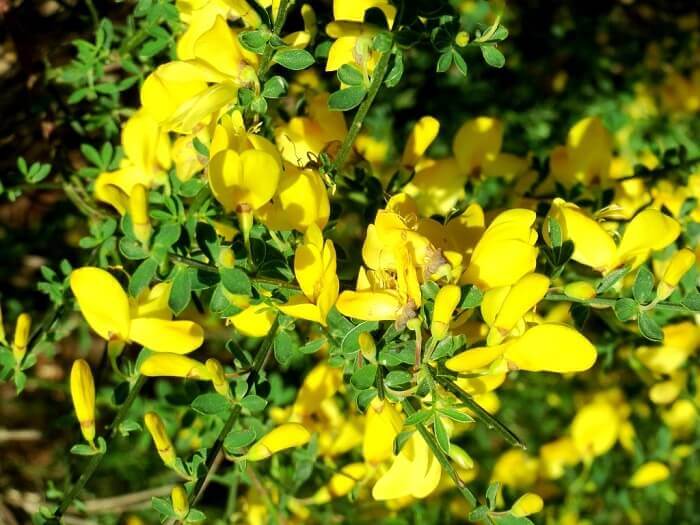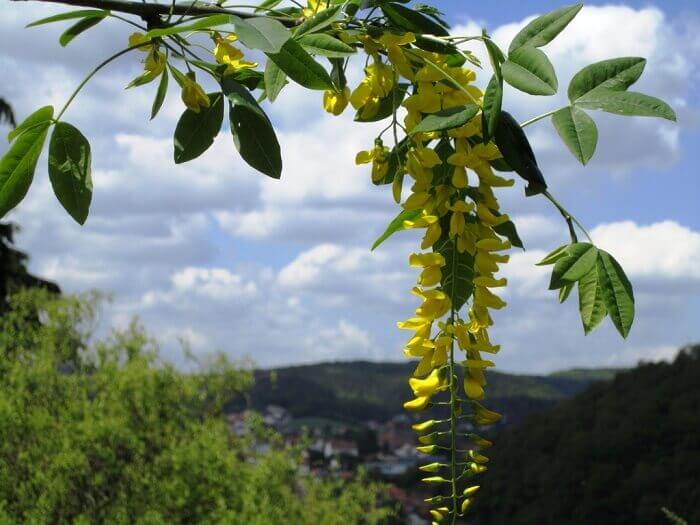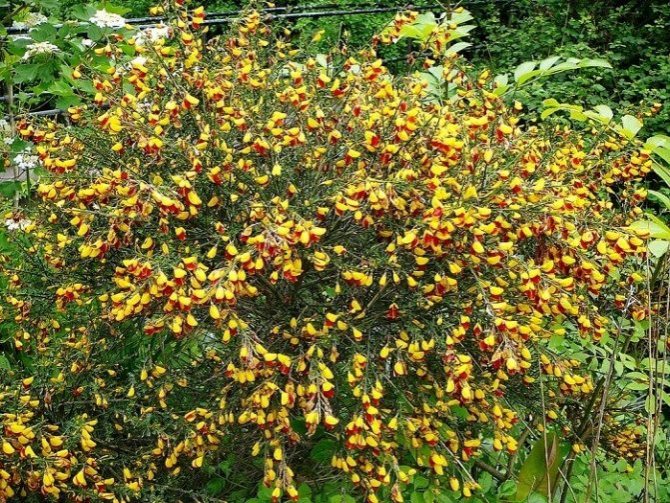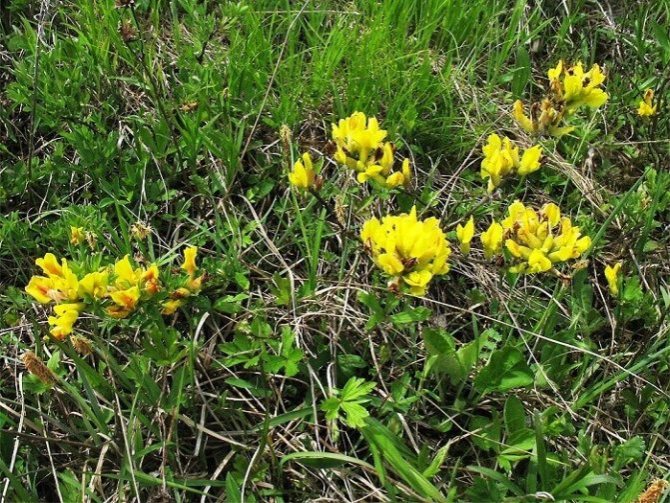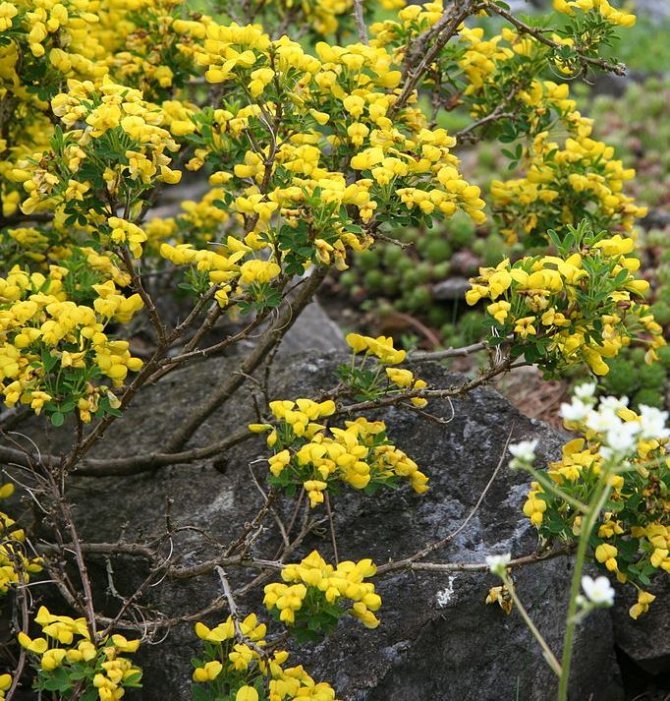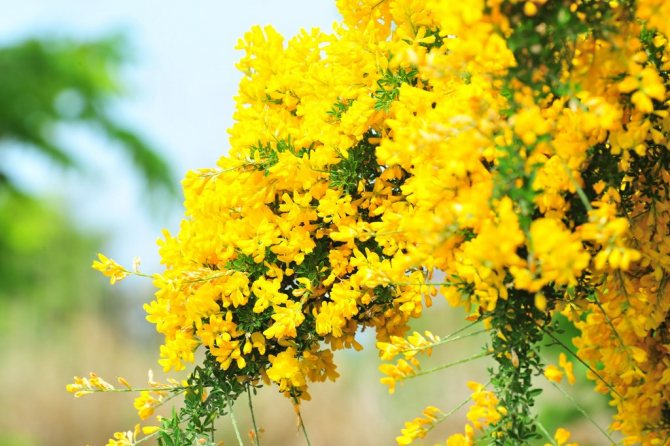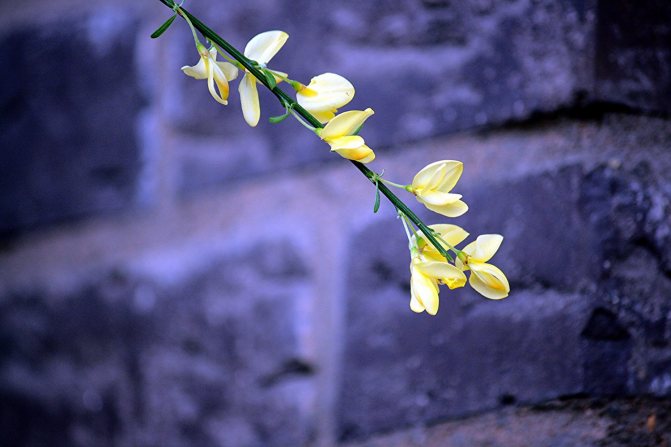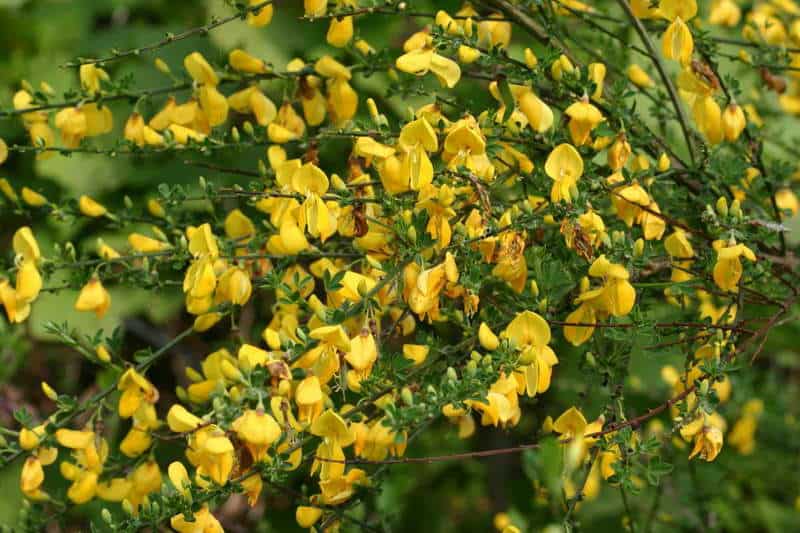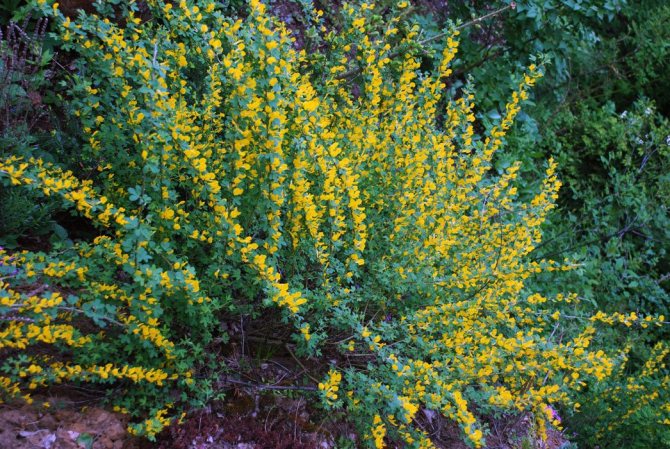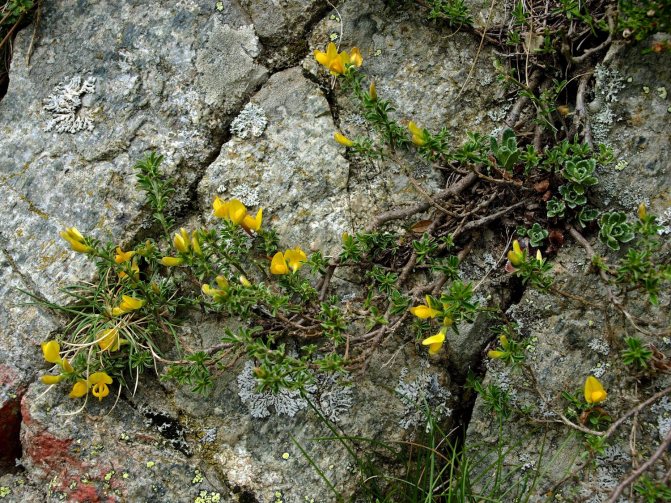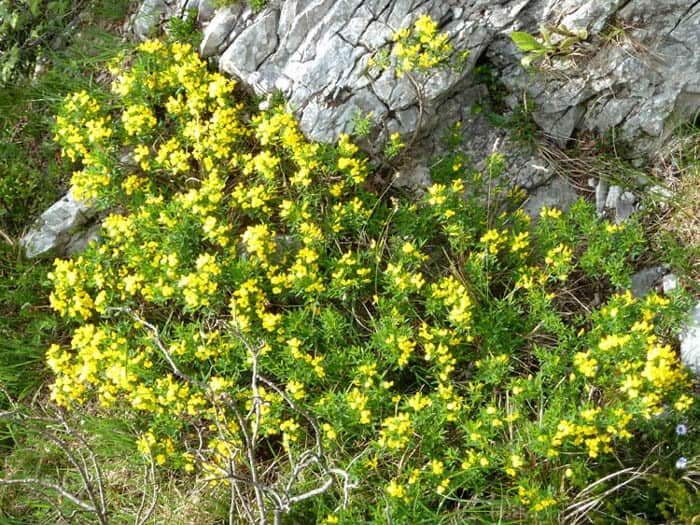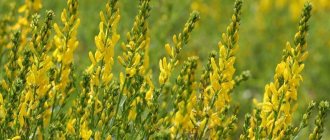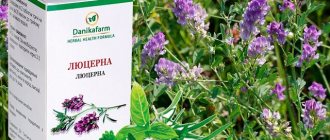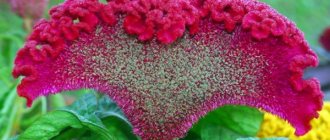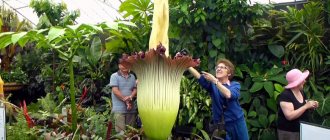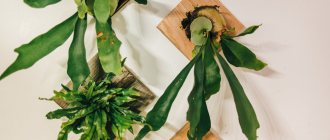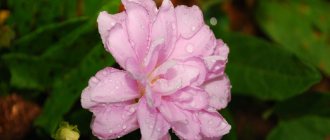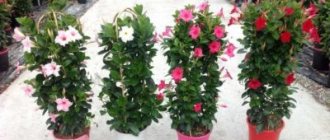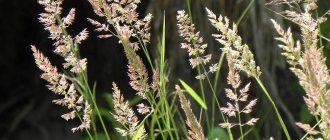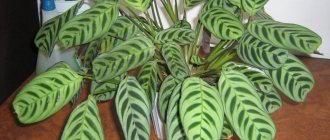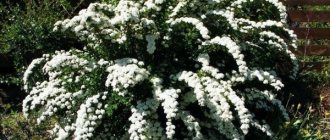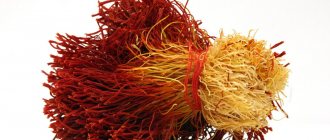Broom is a lush bush that pleases with abundant flowering in early spring. The plant belongs to the Legumes family. Its fragrant thickets can be found in Western Siberia, as well as in certain regions of Europe and Africa. They are suitable for growing in the garden or indoors. In Celtic mythology, broomstick is associated with well-being and getting rid of everything unnecessary. A whole month is devoted to the plant, when it is necessary to take stock and cleanse itself of bad habits. For a modern person, broom is a wonderful decoration of the garden, a good honey plant and a medicine.
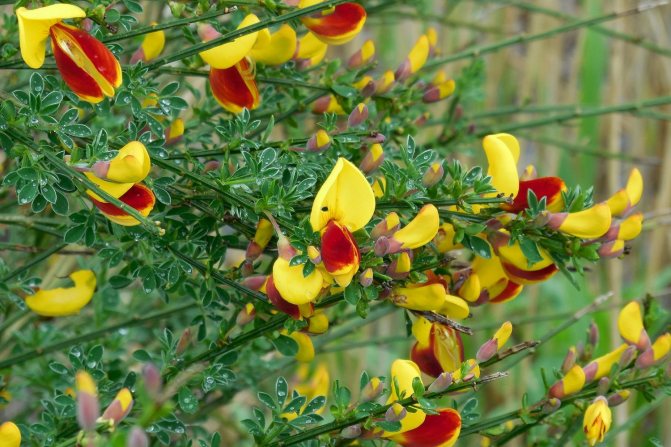
Here you will find out:
Description of broom
Broomsticks are evergreen and deciduous shrubs, less often small trees. The leaves are trifoliate, less often single-leafed. Flowers are collected in clusters, apical or axillary, yellow, red, white.
Among the representatives of the genus there are winter-hardy and non-hardy species, widespread ornamental plants. In central Russia, widespread broom russian (Cytisus ruthenicus). Broomsticks are good honey plants.
Many brooms are poisonous - contain the alkaloid cytisine, enzyme, pectin, etc. In small doses, cytisine is used for administration in order to induce disturbed breathing in many diseases (intoxications, surgical interventions, suffocation, etc.).
Non-resistant species are suitable for decorating large, bright, cool rooms; they need cool content in the autumn-winter period.
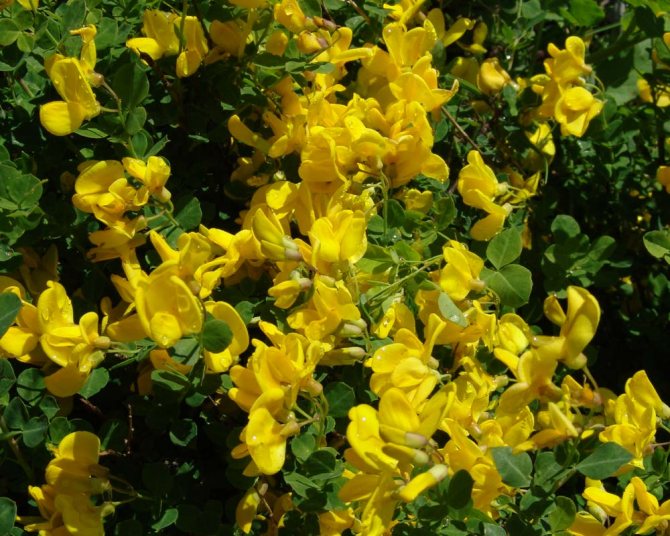

Sessile broom (Cytisus sessilifolius syn.Cytisophyllum sessilifolium). <>
Broom care
Broom prefers bright diffused light, some direct sunlight can be allowed, but only in the morning or evening, shade from midday rays. Feels good at windows of south and southeast orientation (with shade from the midday sun), but the best location is east and west windows.
In summer, it is recommended to take the plant out into the open air (balcony, garden). He is provided with diffused lighting and well ventilated. If it is not possible to place the plant in the open air, then the room itself, where the broom is located, should be well ventilated.
In the autumn-winter period, the broom also needs bright diffused light.
In spring and summer, the optimum air temperature for the broom is around +18 .. + 25 ° С. In the autumn-winter period (from November to February), the plant has a pronounced dormant period. At this time, it is advisable to lower the temperature to +8 .. + 10 ° С, when kept in warm conditions (above +16 ° С) the plant gets sick. From March, the plant is brought into a warmer room.
The broom is watered abundantly in the spring and summer, as the topsoil dries up. In the autumn-winter period, especially with a cool content, watering is moderate, careful, in order to avoid acidification of the soil. Watering is desirable with water containing lime.
The broom loves high air humidity, so in spring and summer it is recommended to regularly spray the plant, you can put the container with the plant on a pallet with wet expanded clay or peat. In the case of a cool winter, spraying is done carefully.
The broom is fed during the period of active growth once every 2 weeks with full mineral fertilizer. In autumn and winter, the plant is not fed.
The growth rate of the plant is moderate, three-year-old plants reach a height of 40-60 cm, at the same age they bloom for the first time.After flowering, the plant is pruned to avoid exposure. To enhance branching, the tops of young shoots are pinched.
The broom is transplanted as the container is filled with roots after flowering. A mixture of sod-humus earth and sand (2: 1: 0.5) is used as a substrate. For large plants, a small amount of lime is added to the substrate. Provides good drainage. It is recommended to use wooden tubs or boxes for an adult plant.
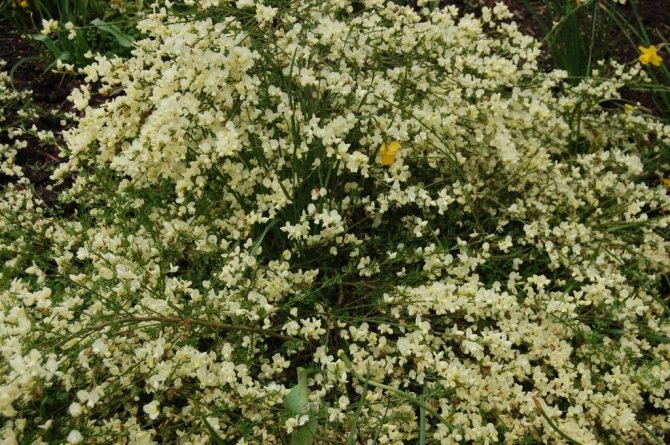

Broom broom (Cytisus kewensis). <>
Planting broom in open ground
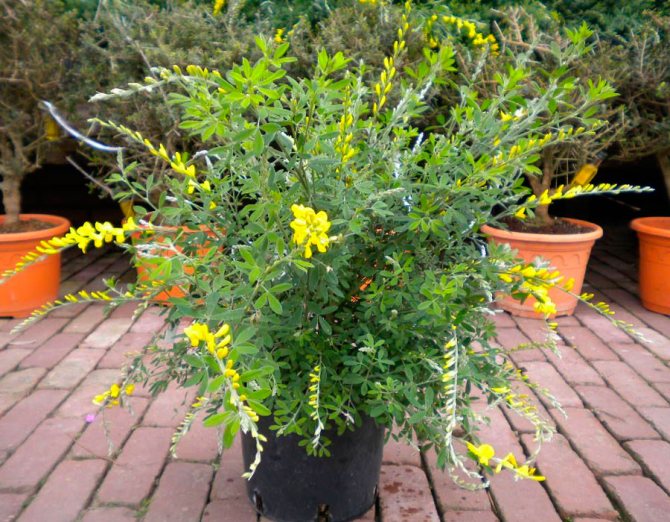

What time to plant
Broom seedlings are planted in open soil in spring. A site for such a culture should be chosen well-lit, as well as having reliable protection from the wind. A suitable soil should be slightly acidic (pH 6.5 to 7.5), lightweight and well-drained. Broom grows best in sandy loam soil. This plant cannot be planted near the reservoir in which the fish lives, since it contains poisonous substances.
Prepare in advance the soil mixture that will be needed to fill the planting pit, it should include sand, turf soil and humus (2: 1: 1). A complete mineral fertilizer should be poured into this soil mixture, for example, you can use Kemiru-universal, while 120 grams of the substance is taken per 1 square meter of the plot. Before proceeding with planting, the soil mixture should be thoroughly mixed.
Landing rules
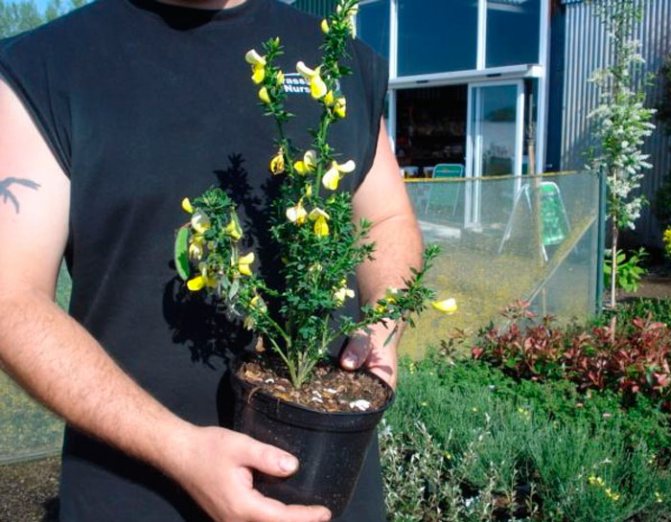

If several seedlings are planted, then the distance between them should be kept at least 0.3 m. The size of the planting hole should be a couple of times larger than the volume of the root system of the plant, taken together with the earthen lump. If the planting is carried out in heavy soil, then a good drainage layer must be made at the bottom of the planting pit, the thickness of which should be about 20 centimeters. When planting a seedling in sandy soil, the drainage layer should be about 10 centimeters thick.
The plant must be placed in the middle of the planting pit. Then the free space is covered with prepared earth mixture. You need to fill the hole gradually, while lightly tamping the soil mixture all the time. After planting, the root collar of the plant should be flush with the surface of the site. When the planting of the seedling is completed, it must be watered abundantly. And after the liquid is absorbed into the soil, its surface should be covered with a layer of organic material, the thickness of which should be from 30 to 50 mm.
Reproduction of broom
Broom is propagated by seeds, as well as cuttings and layering.
Seeds are sown in bowls or containers in the spring in sand or a mixture of peat and sand (1: 1) to a depth of 5-6 mm. The container with seeds is placed in a shaded place and the temperature is maintained within +18 .. + 21 ° С. Spray and ventilate regularly. Seedlings dive one by one into 7-centimeter pots (in the book of Saakov S.G., it is advised to keep the container with seeds in a bright place).
With the growth of the root system, transshipment is made into 9-centimeter pots. The composition of the earth: turf - 2 hours, humus - 1 hour, sand - 0.5 hours. In the spring, they are transplanted into 11-centimeter pots. After transplanting, the shoots are pinched for branching purposes. In the third year, the plants bloom, reaching 30-50 cm in height.
Semi-lignified shoots with three to four leaves are cut into cuttings. Large leaves are shortened. Cuttings are rooted in summer in a mixture of peat and sand. The cuttings are covered with a glass cover, the temperature is maintained within +18 .. + 20 ° С. Spray and ventilate regularly. Rooting occurs in 1-1.5 months. Rooted cuttings are planted in 7-9 cm pots. In the future, the care of the plants is the same as for two-year-old seedlings.
Precautions: all parts of the plant contain toxic substances.
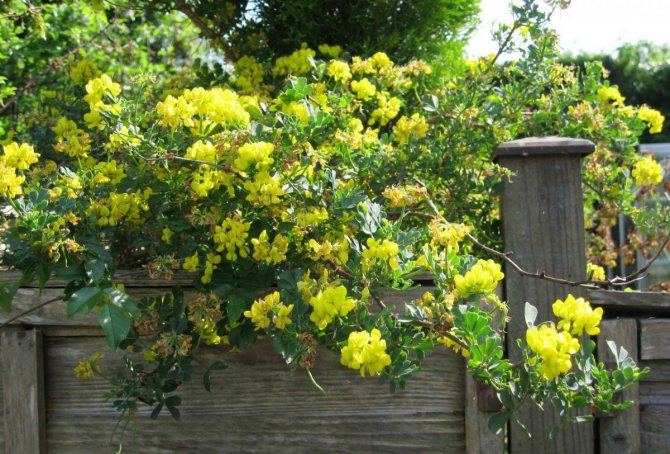

Coronal broom (Cytisus scoparius).
Planting and transplanting
Broom prefers open, sunny and warm places.But the broom does not tolerate drafts and winds. Planting is best done in late spring.
This shrub is unpretentious in terms of soil selection, its varieties are capable of growing in impoverished areas. But for abundant flowering, light, sandy soils with low acidity are more suitable.
Due to the fact that the broom bush is poisonous, its proximity to water bodies is undesirable. This can destroy the fauna in the reservoir.
Soil composition:
- sand -2 parts;
- land - 1 part;
- humus - 1 part.
If the soil is very poor, then it will not be superfluous to add a mineral complex. The bushes are planted in the soil at a distance of 30 centimeters from each other.
Broom species
Broom Corona - Cytisus scoparius
Shrub up to 3 m tall with thin, green shoots, pubescent in youth. Leaves are alternate, petiolate, trifoliate, leaves are oval or oblong-lanceolate, obtuse, entire, the upper leaves often have one leaf. Flowers up to 2 cm, irregular, single or in pairs in leaf axils, light yellow; the calyx and pedicel are pubescent. The fruit is a narrow, oblong, flattened pod with two or more seeds.
The leaves fall very early, which indicates the preparation of the shoots for the winter cold: indeed, the shrub tolerates frosts down to -20 ° C. The most beautiful and widely cultivated in Europe, in areas with a mild climate.
In culture since ancient times. Suitable for growing in large rock gardens or as single plants in sunny meadows. It goes well with actions, weigels, chubushniks; used when decorating edges in front of birches, pine; good at plantings with heather. It has many decorative forms, one of them in the photo.
Broom cus -Cytisus kewensis
Among dwarf brooms in Europe, a hybrid of Cus broom is popular, which was obtained in 1891 in the English Botanical Garden in Kew.
Its height is only 0.3 m, but its width reaches 2 m. Branches drooping and creeping with trifoliate leaves and very large milky-white-yellowish flowers in the growth of the current year. An excellent shrub for parterres and rocky gardens. Perhaps a small growth, allowing you to use a good shelter for the winter, will make it possible to promote this culture to the middle zone.
Broom protruding-flowering - Cytisus emeriflorus
From the range of European brooms for rock gardens in our zone may be of interest broom floating, or flowering, or edge-floweredas it can withstand frosts down to -20 ° C. It is a shrub up to 60 cm high with trifoliate miniature leaves and very large bright yellow flowers on long pedicels that seem to float under the leaves; during the flowering period, they are visible only from the lower side of the branch.
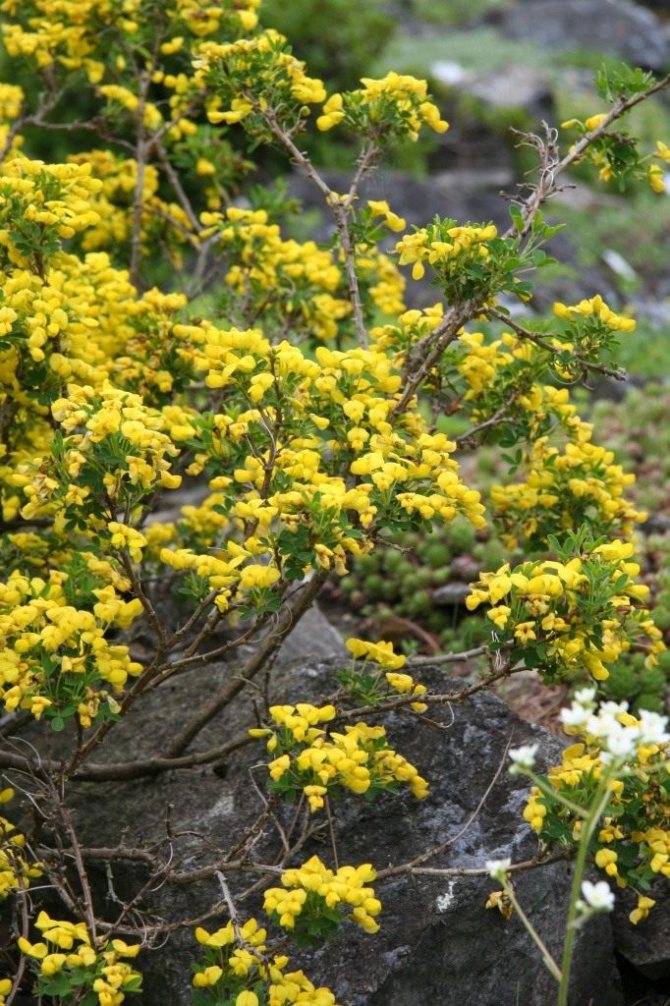

Floating broom, or protruding flowering, or edge flowering (Cytisus emeriflorus).
Early broom - Cytisus praecox
Unpretentious shrub up to 1-1.5 meters tall with thin, spreading, arched branches forming a dense, dense crown. Leaves are lanceolate, narrow, up to 2 cm long; light green. The root system is superficial. Very plentiful, bright yellow flowers with a pungent odor appear in May.
It develops well on light sandy soils of slightly acidic or neutral reaction. Frost resistant. It is widely used in landscaping to decorate sandy slopes, protective plantings and curbs. It is also an excellent plant for group and single plantings.
On its basis, the ‘Allgold’ variety was created with bright yellow flowers that appear even before the leaves bloom.
Crowded broom - Cytisus aggregatus
The dwarf broom is native to the countries of Central Europe (Hungary, Czech Republic, Romania).
It is of considerable interest. This shrub has a height of only 0.3-0.5 m. The diameter of the bush is 80 cm. According to test data, in Moscow conditions, shoot growth begins in late May - early June and continues until September-October.Blooms in early July, blooms for a long time - until early October. The fruits ripen in October.
Its wonderful yellow-colored low bushes can decorate any sunny spot in the garden, as long as the soil is suitable. This wonderful shrub is very fast-growing - it blooms and bears fruit from the age of three. It can be propagated by seeds, the germination of which exceeds 90%, and summer cuttings, which root well immediately after flowering (rooting rate 87%). Sometimes the ends of annual shoots are frozen over, even more rarely - of perennial shoots.
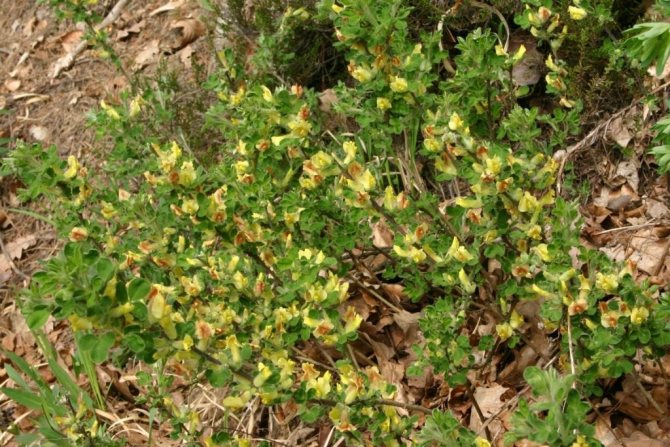

Crowded broom (Cytisus aggregatus syn.Cytisus hirsutus). <>
Broom creeping - Cytisus decumbens
A widespread shrub up to 20 cm in height and up to 80 cm in diameter. Shoots are green, with 5 ribs, pubescent, rooting. Leaves are dark green, oblong-lanceolate, 0.8-2 cm long, covered with hairs on the underside. Flowers from bright to dark yellow, up to 1.5 cm long, located 1-3 in the axils of the leaves along the branches. It blooms so profusely that it has no equal among dwarf brooms.
Fruits - beans, up to 2.5 cm long, pubescent. In culture since 1775. Used for planting in groups and on rocky hills. It is frost-hardy, but in severe winters it can freeze slightly. Propagated by seeds and cuttings, winters well under the snow, covered with a leaf or spruce branches.
Broom oblong - Cytisus elongatus
More often than others, you can find oblong or elongated broom in the culture. It is a shrub up to 1.5 m tall. In the conditions of the Moscow region, the growth of shoots begins in late April - early May and continues until the end of October. Blooms at the end of May, flowering continues until the end of July. The flowers are golden yellow, appear in the gray-green axils due to the abundant pubescence of the trifoliate leaves. It develops best on loose, nutritious soils in sunny places.
It is a shrub up to 1.5 m high with trifoliate leaves and a tip at the top. Blooms annually in June. Bright yellow flowers about 1.5 cm long appear on shortened peduncles in the form of a loose brush. Bears fruit from the age of 5. Fruits - small beans about 3 cm long, ripen in September.
The shrub is photophilous and drought-resistant, but not hardy - in winter, the shoots freeze over the level of the snow cover. Needs shelter for the winter and sanitary pruning. Can be used in landscaping for planting on an alpine slide.
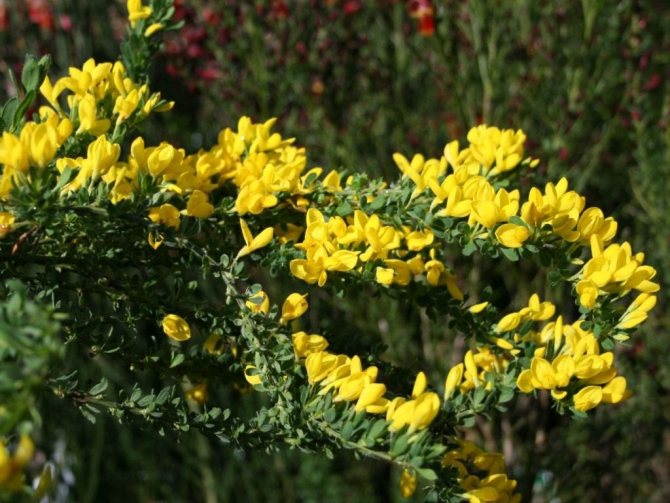

Creeping broom (Cytisus decumbens). <>
Blackened broom -Cytisus nigricans
European part of Russia, Belarus, Ukraine, Western Europe. Protected in the Carpathian Nature Reserve and Belovezhskaya Pushcha. It grows in the basins of the Dniester, Dnieper, Volga, Sura rivers and along their tributaries. In the undergrowth of pine, oak, pine-birch forests, often on the sands. Photophilous mesophyte.
It is named so because its leaves turn black when dried. It is a shrub up to 1 m tall, growing in the pine forests of the forest-steppe belt. Shoots are covered with short, appressed pubescence. It blooms from the end of June to the end of September with golden yellow flowers, collected in 15-30 pieces in vertical spike-shaped inflorescences at the ends of the shoots. Exceptionally beautiful during long flowering periods. Fruiting from the age of two. The seeds are highly viable.
Zinger's broom - Cytisus zingerii
Inhabits a strip of mixed forests and spreads north to the upper reaches of the Dnieper, Volga, Northern Dvina.
Close to Russian broom. No more than 1 m in height. Its young shoots, decorated with golden pubescence, are well leafy with light green leaves, which consist of three leaves up to 2.5 cm long. During the flowering period, which begins in late May - early June, the already beautiful branches flare up with yellow flowers, which one or two emerge from each leaf axil and turn the shoots into golden ears, as it were. After flowering, beans up to 3 cm long are formed, covered with white pubescence. The seeds ripen at the end of July.
The Zinger broom is photophilous, like the Russian broom, it grows in light pine forests on sandy soil. Little known in culture.
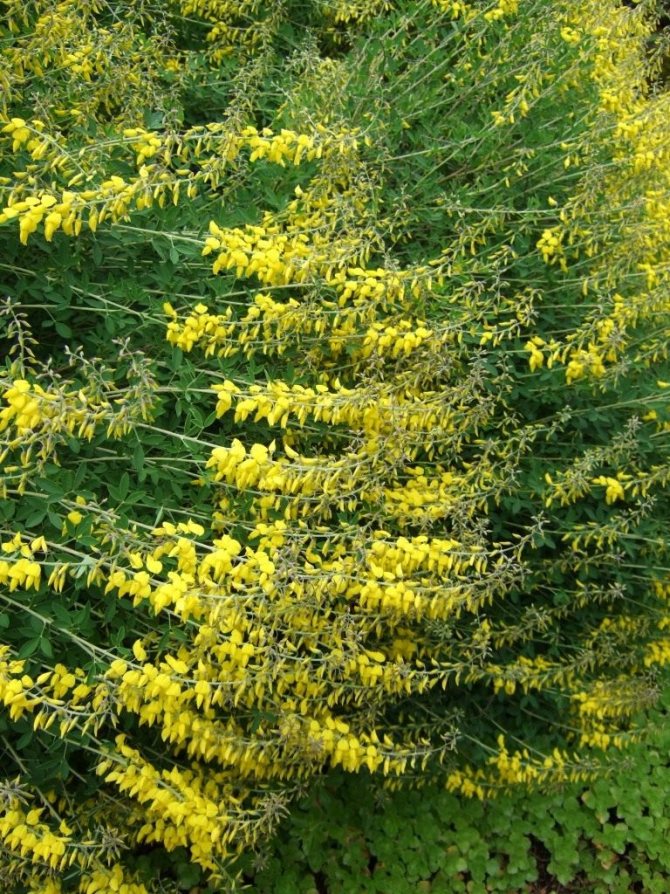

Blackened broom (Cytisus nigricans). <>
Varieties
Boskoop Ruby
Of the early broom varieties, this is the most decorative. It has thin and long, flowing branches on which small bright green leaves are located.
The flowering of this variety is especially beautiful. The red flowers are mauve in color on the inside. The bush is literally strewn with them, not even the leaves are visible. Quite tall, reaching two meters in height.
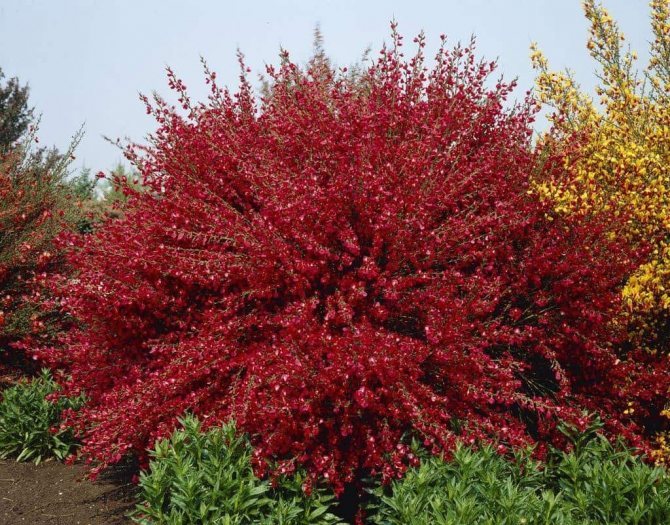

Early Zealand broom (Zeelandia)
A very unpretentious variety with narrow bright green leaves. It blooms with pale pink flowers with a peach hue inside. Heat-loving variety, shelter is necessary for the winter.
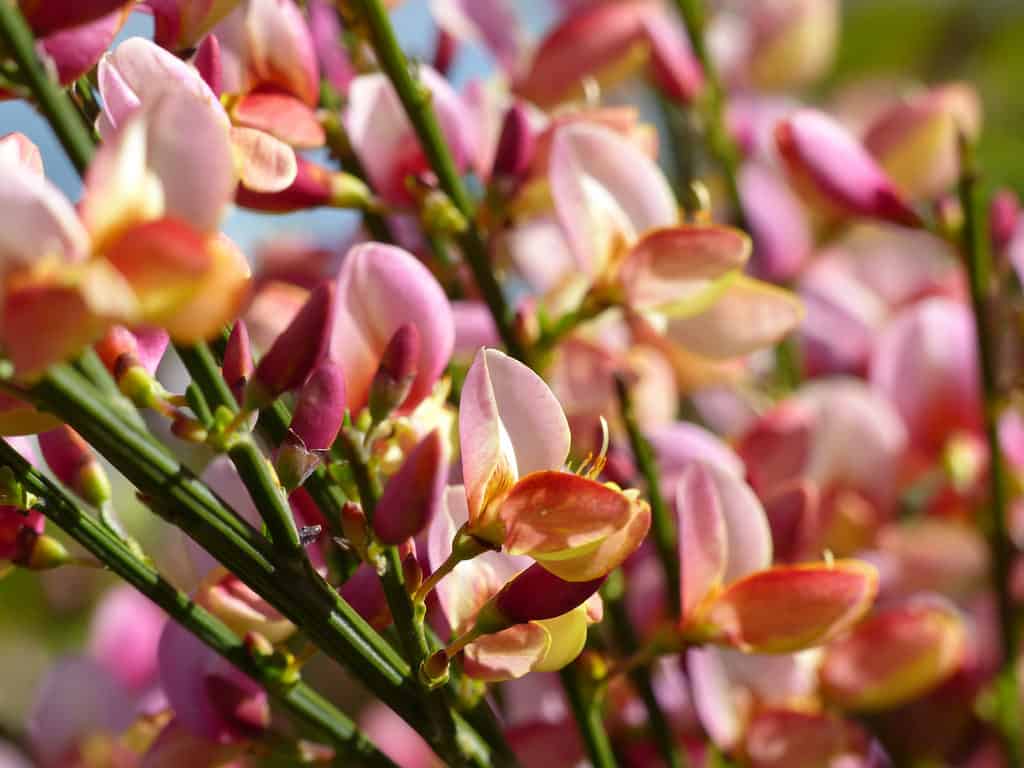

Allgold
It is also a variety of the early species. A lush bush with a spreading crown up to 2 meters in diameter, can grow up to one and a half meters in height. It has flowers of a beautiful yellow color.
Differs in abundant flowering and strong aroma. It is a sun-loving shrub that loves sandy soil and tolerates low temperatures well.
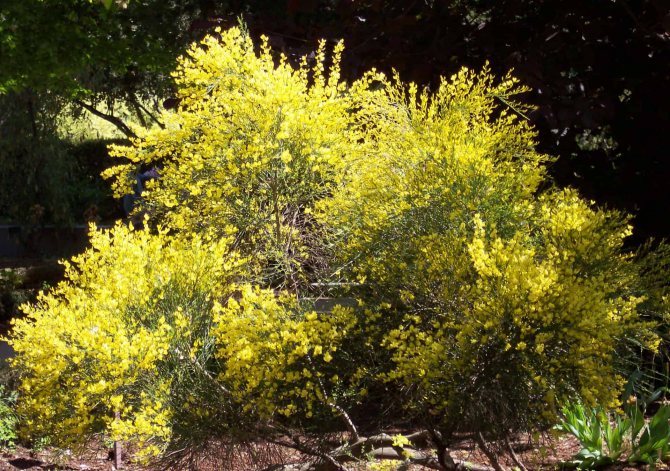

Lena
Low, up to one and a half meters, spreading shrub. It blooms very profusely with scarlet flowers, which are shaded inside by stripes of dark gold color. This is a thermophilic variety that requires shelter for the winter.
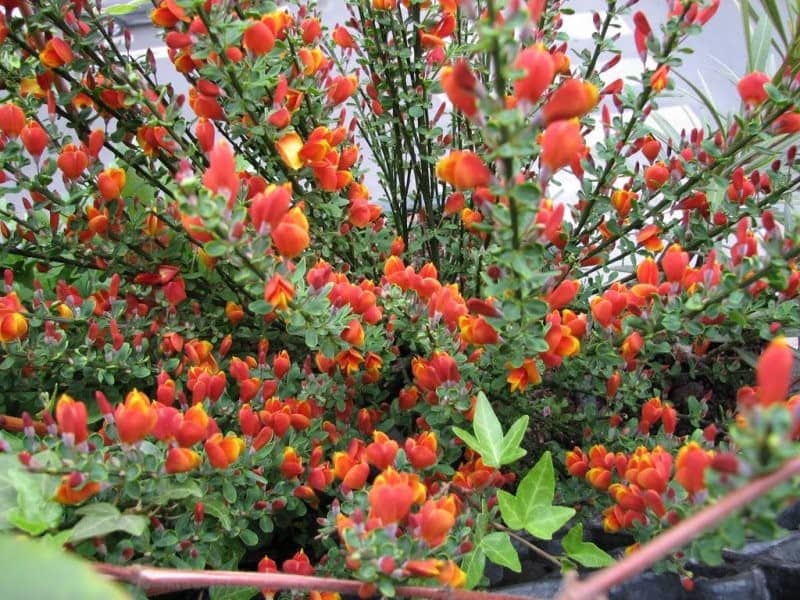

Andreanus Splendens
Crown broom variety. It has a spherical shape, growing both in height and width by one and a half meters. The flowers are very bright yellow with brown outer leaves. Sun-loving variety, blooming from the end of May.
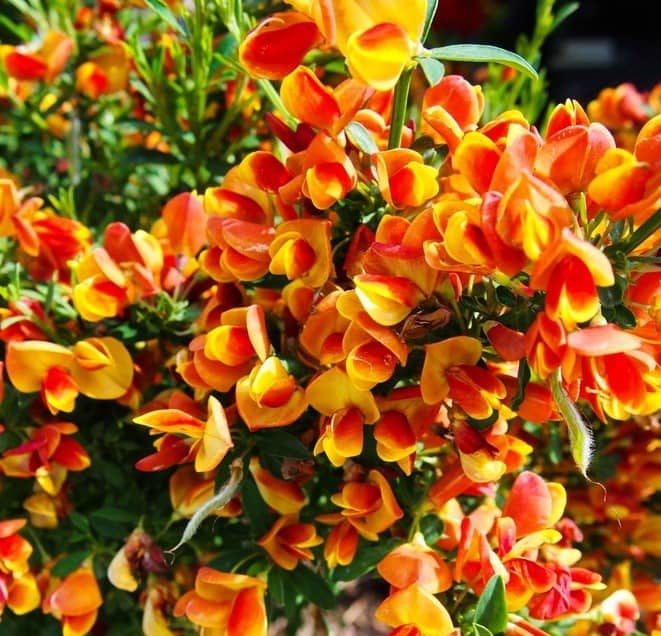

Palett
This variety has rather large, up to 3 centimeters in diameter, red, with a yellow border, flowers. Resistant to low temperatures.
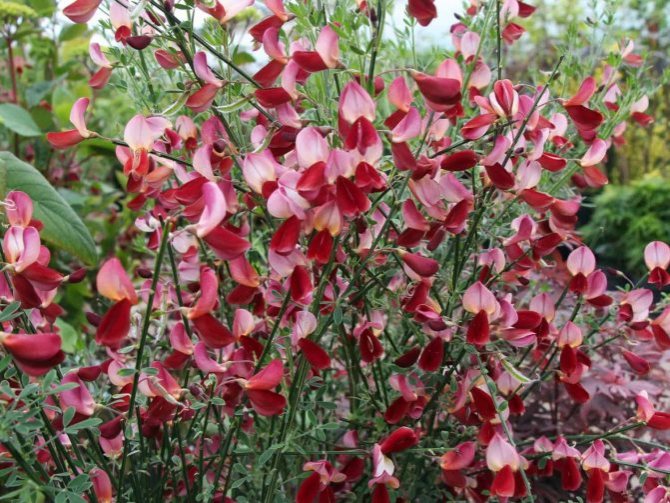

Holland
It grows up to one and a half meters in height. The crown also spreads out to one and a half meters. It has a very showy bloom and a very lush bloom in April-May. Coloring of flowers - all shades of carmine. This sun-loving plant is frost-hardy and adapts well to urban conditions.
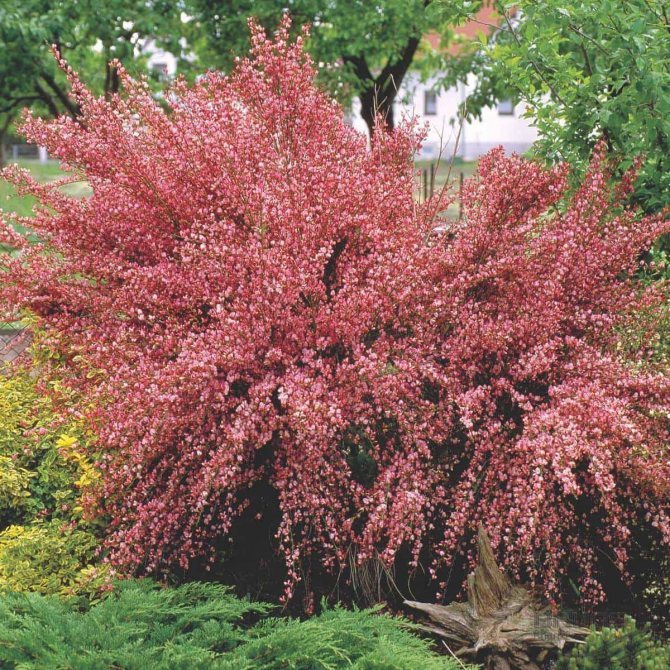

Albus
This is a varietal variety of early broom. Lush and compact, rounded bush, grows up to 1.2 meters in width and height. It blooms with white flowers with a slight yellow tint. Blooms starting in May for a month. The variety tolerates frosts well down to -20 degrees.
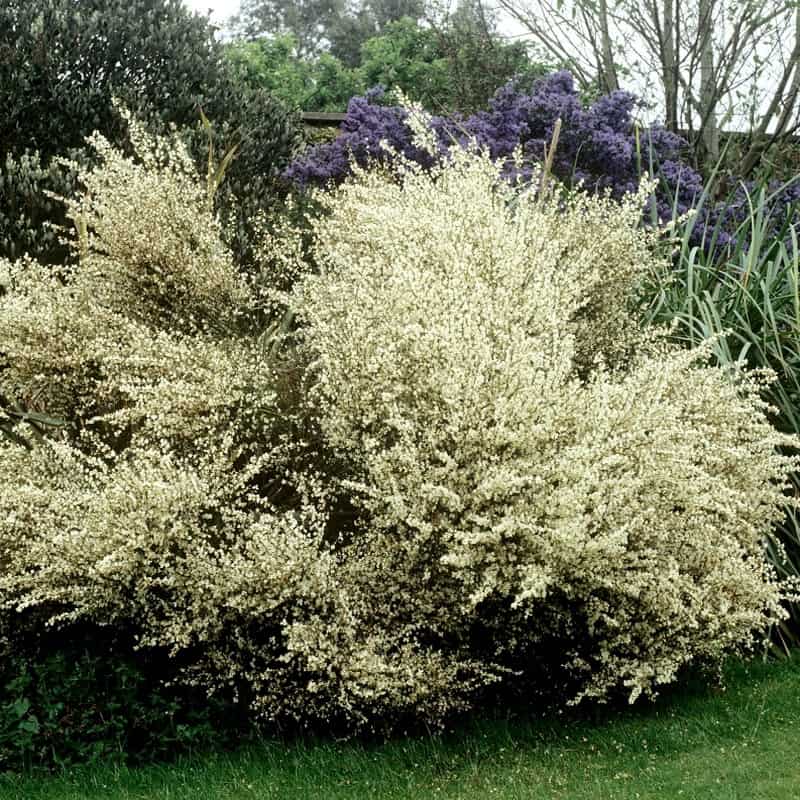

Burkwoodii coronal broom (Burkwoodii)
It grows up to two meters in height. The bloom is very bright and abundant. Flowers up to 3 centimeters in diameter, coral red, bordered with a golden edge.
It adapts well to poor soils, frost-resistant, easily tolerates drought.
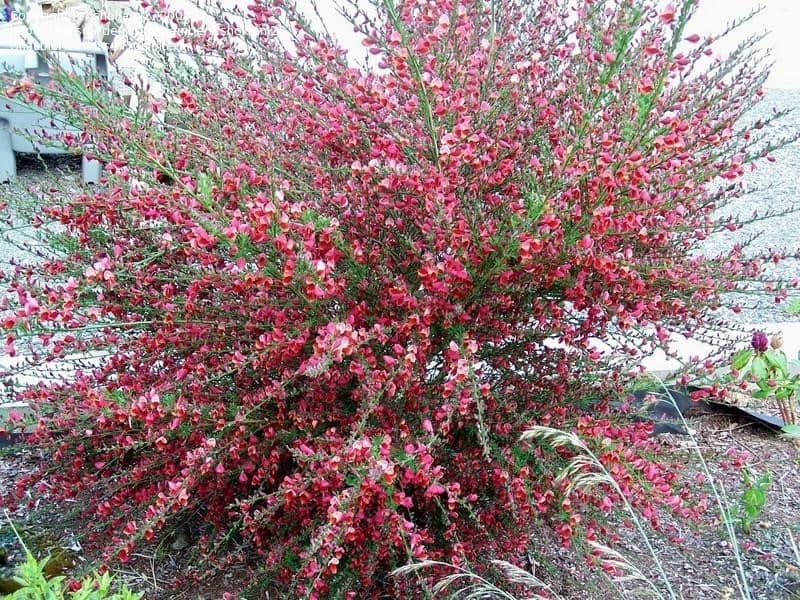

Golden rain
This variety grows like a short tree. Poisonous variety.
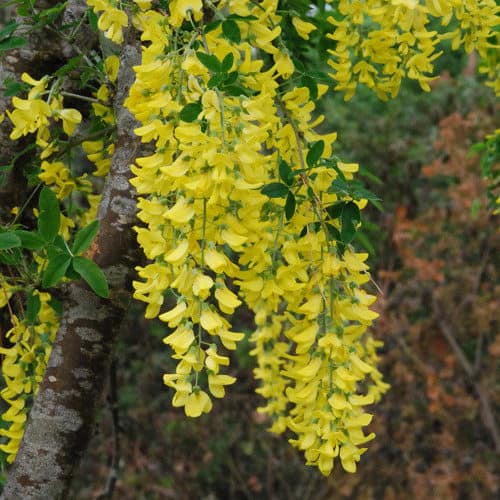

Diseases and pests of broom
Broom moth - spraying with chlorophos (0.2%) at the first appearance of a moth on the leaves.
Broom moth - treatment with organophosphate or bacterial insecticides, as well as their mixture.
Powdery mildew - on dormant kidneys, treatment with copper sulfate (5%), in summer, regular treatment with foundationol, copper-soap liquid, colloidal sulfur (0.8%) alternately.
Black spot - on dormant kidneys, treatment with iron or copper sulfate; in summer, spraying with basezol, polycarbacin (0.2-0.4%), copper oxychloride (1%), captan (0.5%), Bordeaux liquid (1%) or other preparations of your choice.
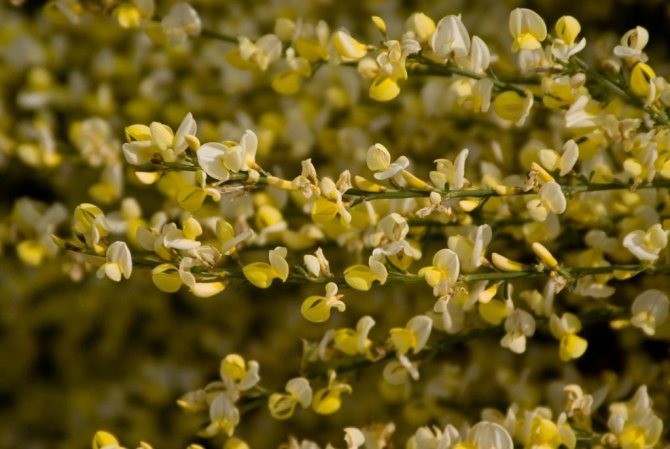

Early broom (Cytisus praecox). <>

